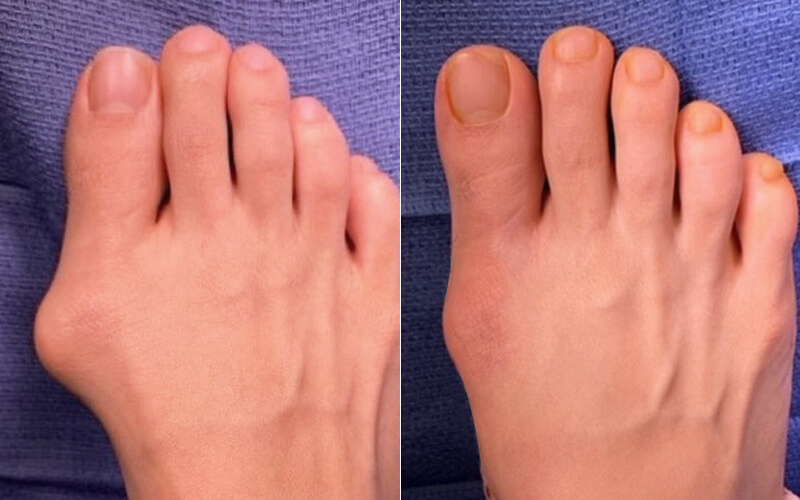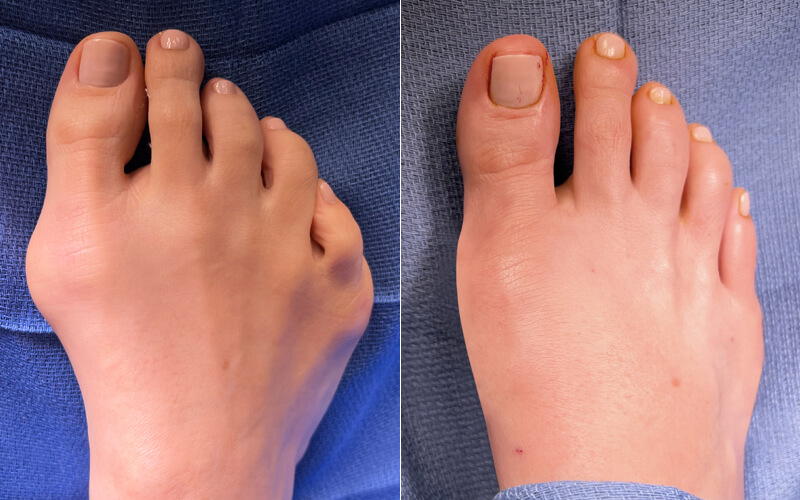What is a foot lipoma ?
A lipoma is a benign tumor composed of adipose tissue or body fat tissue. It is the most common form of (noncancerous) soft tissue tumor. Lipomas are soft to the touch, usually movable, and are generally painless – often found on the foot, upper back, shoulders, arms, and upper thighs of the body.
Candidates who wishes to remove a lipoma are often for aesthetic reasons. However, if a lipoma is painful or continues to grow larger, it can be removed with a simple lipoma excision procedure.
[ See other popular foot surgeries such as bunions surgery, PRP Treatment, Achilles tendon surgery, Plantar Fasciitis Treatment, and flat foot surgery ]

What are the symptoms of a foot lipoma?
- Are small [0.4 in. (1 cm) to 1.2 in. (3 cm)] and felt just under the skin.
- Are movable and have a soft, rubbery consistency.
- Do not cause pain to the feet for activities such as walking or running.
- Remain the same size over years or grows very slowly.
Who usually gets foot lipoma removal?
Those wanting foot lipoma removal are usually those between the age of 40 and 60 years. More often sought for larger and more frequent foot lipoma treatment are men, butthere is a high percentage of women who comes in for foot tumor surgery as well. Single foot lipoma occurs with equal frequency in both men and women.
Foot Lipoma Treatment and Examination
The only treatment that will completely remove a foot lipoma is a procedure called Foot Lipoma Excision or foot tumor removal.
- Foot Lipoma Excision Procedure
The area around the lipoma is injected with a local anesthetic so that it becomes numb and painless. Larger size lipomas may require regional anesthesia or general anesthesia – injection of numbing medication into specific nerves to manage the pain. General anesthesia puts you to sleep and once you wake up, the procedure is done and over with. - Foot Lipoma Excision Recovery
After the incision has been made and the lipoma is removed, patients should be able to return home after the foot lipoma excision with minor stiches which Dr. Jamshidinia will remove within a couple of weeks.
Each patient’s foot lipoma excision recovery time will depend on the size and location of their lipoma. Limit your activities to a minimum is you experience any comfort due to walking or applying pressure to the foot. But don’t you worry. Dr. Jamshidinia will be gentle during the procedure and will provide you with specific aftercare instructions for your individualized treatment. - Foot Lipoma Excision Recurrence
It is very unusual for a lipoma to grow back. Lipomas are always cured by simple foot excision procedure, but if it does recur, excision is again the best treatment option.
We Made Them All Happy
Kimberly D. / Los Angeles, CA
Foot Lipoma Excision Examinations and Tests
- X-rays. Although these tests create clear pictures of dense structures like bone, plain x-rays can show a prominent shadow caused by a soft tissue tumor.
- Computed tomography (CT) scans. These scans are more detailed than x-rays and will often show a fatty mass to confirm the diagnosis of lipoma.
- Magnetic resonance imaging (MRI) scans. The best information for diagnosing lipoma comes from an MRI scan, which can create better images of soft tissues like a lipoma. MRI scanning will show a fatty mass from all perspectives. Oftentimes, doctors can make the diagnosis of lipoma based on MRI imaging alone, and a biopsy is not required.
- Biopsy. A biopsy is sometimes necessary to confirm the diagnosis of lipoma. In a biopsy, a tissue sample of the tumor is taken and examined under a microscope. Your doctor may give you a local anesthetic to numb the area and take a sample using a needle. Biopsies can also be performed as a small operation.




